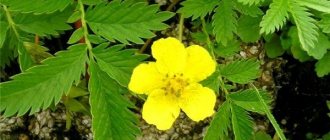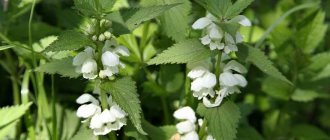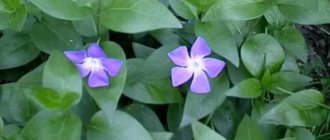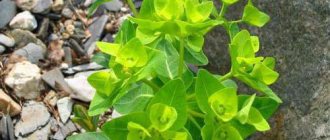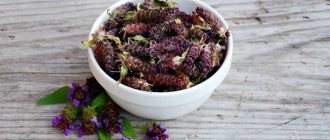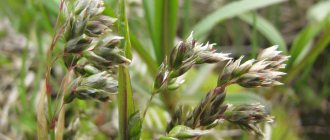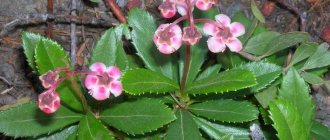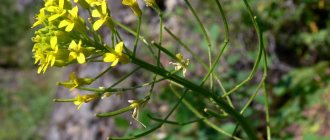Cat's paw in gynecology
Male flowers are white and blunt in shape, while female flowers are pink and have pointed edges.
The front surface of the leaves of the cat's paw is bare, and the back surface is rough. Another popular name for the plant is white immortelle (and here it is important not to confuse the cat's paw with sandy immortelle, which has bright yellow flowers). The cat's paw was nicknamed immortelle for the reason that even when dried, this plant does not fade
In Russia, this plant can be found in the European part of the country, the Caucasus, the Kuril Islands and Siberia. The cat's paw prefers pine forests, dry meadows and clearings, wastelands, sun-drenched edges, sandy shores of reservoirs and dry moss-lichen tundra.
Cat's paw flowers from mid-May until the end of July, while the plant's fruits ripen from June to August. The following parts of the cat's paw have medicinal properties: 1. It is the stems, leaves and flowers of the plant that contain useful substances, thanks to which the cat's paw has found wide use in herbal medicine.
Grass during flowering and inflorescence until the baskets open. It is advisable to store dried parts of a cat's paw in a cool place in paper bags or boxes (you can use boxes pre-lined with paper). This part of the plant is indicated as a gargle for diseases of the throat and mouth. Cat's paw flowers help cope with cholecystitis, diarrhea, jaundice, liver and stomach diseases.
Cat's foot flower powder speeds up the wound healing process. Using a cat's paw can improve vision and speed up the treatment process for diseases such as glaucoma and cataracts. Infusions of cat's paw help cure inflammation, stop bleeding, and act as a choleretic agent. To prepare the tincture, 1 tbsp. cat's paw herb is poured with 100 ml of vodka and infused for a week in a dark and always warm place (the tincture should be shaken periodically).
One of these plants is cat's paw, which has excellent hemostatic and anti-inflammatory properties.
But! Since cat's paw is a strong hemostatic agent, it should be taken with extreme caution by people suffering from thrombophlebitis. 2 tbsp
Place flowers, as well as cat's paw herb, in a thermos and pour one glass of boiling water, then leave the product, shaking occasionally, for half an hour.
The plant is dioecious, the baskets with female flowers are oblong, usually pink. Recipes for treatment using cat's paws herb are described in the second part of the article. The perennial plant of the Asteraceae family in the photo - cat's foot dioecious - has the botanical name Antennaria. Antennaria is a heat-tolerant grass, but it tolerates frost no less steadfastly. Even when dried, a cat's paw looks fresh, which is why it is called immortelle.
Externally, cat's paw is used to treat periodontal disease, as a lotion for hernias, wounds, ulcers, and in the treatment of inflammatory eye diseases and hemorrhoids. Most often in gynecology, the use of cat's paws herb is based on its hemostatic and anti-inflammatory effects.
In gynecology, the plant is also used to treat vaginitis, colpitis, and vaginal thrush. Leave the product for an hour, shaking occasionally, then pour it into a saucepan and let it boil. For this purpose, brew 2 tablespoons of herbs and antennaria flowers with a glass of water, leave until cool.
The flowers of this herb are small and collected in small baskets. This dioecious plant is used in folk medicine for its flowers and the herb itself. For this purpose, flowers are collected during the flowering period. In modern folk medicine, cat's paw is successfully used to treat various diseases. The plant is also used as a sedative.
For jaundice, it is recommended to wash your face with a decoction of cat's paws. For diathesis and childhood eczema, children are bathed in baths with such a healing decoction. Cat's foot, a member of the Asteraceae family, is often used in folk medicine. This perennial plant reaches a height of 25 cm. The simple stem is complemented by spatulate basal and linear stem leaves.
Preparation and storage of cat paws
- Grass and flower baskets are harvested during the flowering period and dried in the shade. Store for no more than a year.
- Stems and leaves, cut before the buds open, are also dried in the shade, but can be stored for up to three years.
- Unopened inflorescences are also collected; their shelf life after drying is one year.
- Pack raw materials in paper containers.
- A dryer is not used so as not to overdry the flowers, which in such cases lose some of their healing substances.
- The seeds are collected at the end of December.
- The root can be dug up at any time.
Very often, recipes from traditional healers work wonders . You just need to carefully study the natural possibilities, the composition of plants and the experience of herbalists accumulated over thousands of years. Since you are interested in such recipes, you simply need to familiarize yourself with the information about the beneficial properties of the fruits of the coffee tree, methods of preparing medicinal infusions from the kochia herb, and the incredible results obtained from using mullein potions.
Have you, dear readers, ever taken decoctions or tinctures of cat’s paws? What ailments prompted you to do this? We are waiting for your comments.
Cat's paw plant is dioecious
Growing alyssum: when and how to plant it from seeds
Cat's paw is a plant common in temperate regions of the Northern Hemisphere, except for one species (Antennaria chilensis), which is native to South America. Herbaceous dioecious perennial grasses belong to the Asteraceae family; sometimes presented in the form of subshrubs, often softly tomentose. Some types of cat's paw reach a height of 10 to 50 cm. The diameter of the inflorescence-basket is from 2 to 8 mm, it contains from 20 to 100 flowers. The leaves are basal, and the flowers, as a rule, are unisexual, forming achenes with a pappus. Dear friends and guests of the Narmedblog.ru blog, today I want to reveal to you the secrets of the cat’s paw - a little-known plant.
An amazing legend has reached our times. A woman of Slavic nationality came to the camp of the treacherous Mongol-Tatar occupiers to rescue her son and husband from captivity. The cruel khan allowed her to do this on the condition that she find them until the plucked flower withers. The woman was lucky: she managed to free the prisoners, thanks to the cat's paw - a plant that does not wither for a long time. The plant's soft, warm flowers resemble the paws of a kitten, which is where its name comes from.
Helping plant against forty ailments
● Many patients have experienced the healing properties of a cat's paw. Here's what one patient says. “My liver got sick, bile stagnated, everything went wrong in my body. The hospital prescribed me a lot of medications, which I did not have enough money to purchase. Seeing this, the wife put aside the prescriptions and said that she would cure it herself. I couldn’t even think then that a cat’s paw could immediately cure not only the liver, but also the kidneys, gall bladder and peptic ulcers. It’s not for nothing that people say: cat’s paw is a plant that cures forty ailments. I recovered thanks to this unique plant and diet.” The patient used the following recipes.
● Recipe No. 1 – for stagnation of bile (chronic cholecystitis). You need to pour a glass of boiling water over a tablespoon of cat’s paw flowers, leave for a few minutes and strain. Drink half a glass of infusion twice a day half an hour before meals as a choleretic agent.
● Recipe No. 2 – for liver diseases and cholecystitis. Pour two tablespoons of flowers into a thermos with a glass of boiling water. Leave for half an hour, shaking the contents periodically. Pour the infusion into an enamel pan, bring to a boil, cool for 10 minutes, then strain. Drink 3 times a day, 2 tbsp. spoons before meals. Course – 10 days. After a week, repeat the course of treatment and be treated until complete recovery.
Cat's paw for any bleeding (true story)
● I have known about the healing power of cat's paw flowers since childhood from my beloved grandmother. I collected the soft flowers of the plant during the season and put them in a vase. All winter, the lovely fragrant flowers caressed the eye (they don’t fade for a long time). My grandmother dried flowers in the attic, made a powder out of them, and gave me water when they couldn’t stop the nosebleed. At the same time, he claimed that cat's paw is a plant that can stop any bleeding. We have repeatedly treated exacerbation of hemorrhoids and heavy menstruation: we gave patients 1-3 g of flower powder (on the tip of a penknife) every hour.
● In my youth, I managed to get rid of bleeding gums with the help of an infusion of cat's paw flowers. It was periodontal disease, from which I was completely cured. 2 tbsp. spoons of raw material were poured into 200 ml of boiling water for 40 minutes, filtered and rinsed the mouth after each meal at least 4-5 times a day.
● Cat's paw cures bronchial diseases and pulmonary tuberculosis well, which is why it is also called “chest grass.” The plant is completely non-toxic and can be consumed without fear during the cold season. Pour a tablespoon of dried flowers into a glass of boiling water, leave for four hours and filter. Drink 2 tbsp every 2-3 hours. spoons of infusion. You can brew cat's paw as regular tea and consume until your lungs are cleared.
Useful properties of cat's paw
Cat's paw has numerous properties that bring real benefits to the human body when used correctly. Medicinal compositions from this plant:
- help lower blood pressure,
- acts as a pain reliever for gout and rheumatism,
- accelerate blood clotting, effectively stopping bleeding,
- have a calming effect on the nervous system,
- help wound healing,
- have a positive effect on decreased vision, are used in the treatment of glaucoma, cataracts,
- stabilize the menstrual cycle,
- stop inflammatory processes in the body,
- affect tumors, helping to reduce their size,
- act as a vasodilator
- used in the treatment of gynecological problems,
- help cure colds, coughs, sore throats, bronchitis, throat diseases,
- promotes the removal of stones from the gallbladder,
- effective for hepatic colic,
- used for stomach and intestinal ailments.
general description
Osteospermum, choose an annual or perennial crop
Antennaria (the Latin name for dioecious cat's paw) is a small perennial herb, which in rare cases reaches 25 cm. Creeping roots with recumbent leaves and shoots, modest flowers - all this makes the flower not very beautiful. However, as it grows, it forms very dense and attractive green thickets with a silvery tint. Thanks to this quality, heather and rocky gardens, as well as alpine slides, are often decorated with a cat's paw. It should be remembered that the plant in question loves good lighting and sandy or loamy soil.
Its flowers are collected in compact baskets. The diameter of the largest of them (upper) reaches 6−7 mm. Due to the fact that this grass is dioecious, then, accordingly, the baskets can be female and male. They differ in shape and color. For example, a male plant has snow-white petals, while female plants attract the eye with pink leaves. Also, female flowers have an oblong shape that resembles a bowl. Male grass has a spherical shape.
The flowering period of the grass lasts from early May to early August, but the ripening of the fruits occurs much later. People call a cat's paw differently. One of the oldest names is insensible, since in ancient times this plant was associated with the insensible-wind flower, with the help of which it was supposedly possible to search for treasures. Many healers call it the chest plant, which is explained by the effectiveness of cat's paws in treating colds.
This is a heat-resistant plant. Although it tolerates cold weather just fine. In nature, cat's paws mainly grow in Western Siberia, Northern Europe, Asia and in the vicinity of the Caucasus. The round, snow-white cat's cap will look great among a wide variety of plants. In some cases, Antennaria is found along the banks of water bodies.
Properties and composition
Antennaria is a medicinal herb. It is interesting that all parts of the flower that grow above the ground (flowers, cap, leaves, stem) have medicinal properties.
The usefulness of cat's paws is explained by the composition of the plant. For example, it can be used to quickly stop bleeding. This is achieved thanks to the large amount of vitamin K in the antennaria. But it also has other components. Among them we can highlight:
- alkaloids;
- saponins;
- ascorbic acid;
- resins;
- essential oils.
But it is vitamin K that allows you to use cat paws for a variety of ailments: heavy periods, stopping bleeding after surgery, etc.
The composition of nechuevik also has an analgesic and anti-inflammatory effect. Therefore, the plant will be very useful for diseases:
- gout;
- arthrosis;
- arthritis;
- rheumatism.
The herb cat's foot is also used as a choleretic drug . It helps in the treatment of hepatitis, cholecystitis and some liver diseases.
Features of the medicinal plant
Cat's foot is a perennial herbaceous plant. It reaches a height of 10–20 cm, has a thin rhizome, from which reclining shoots arise, bearing small leaves, stems with inflorescences. Cat's paw flowers are collected in a basket and colored pink or white. They appear in mid-May and persist until the end of July, and in June - August the plant bears fruit - small oblong achenes. A distinctive feature of the cat's paw is the soft felt pubescence of the stems, making them tender to the touch.
The cat's paw is widespread - it can be found throughout Russia: in the European part of the country, in the Caucasus, in Siberia and in the Far East. For growth, it prefers pine forests, dry meadows and clearings with sandy soil, illuminated by the sun. The grass accumulates the maximum amount of useful substances before flowering, so the above-ground part is harvested before the plant blooms. It is recommended to collect the inflorescences shortly before the opening of the baskets.
What does cinquefoil look like?
Cinquefoil or crow's foot, as it is also popularly called, is a perennial herbaceous plant that belongs to the Rosaceae family
In addition, it is worth taking into account the fact that a culture may have other names, for example:
- convulsive grass;
- Martin's hand;
- toad picker;
- Dubrovka goose.
If we consider the appearance of the cinquefoil goose, it is worth noting that it has a fairly thick and multi-headed rhizome, creeping rooting stems, the length of which can reach 70 cm. In some places, thin tendrils may extend from the stems, which in turn take root in the ground. The leaves are basal, intermittently pinnate, and can include from 9 to 20 leaflets. The leaf blade has a green tint on top, silver-white-felt underneath, and the leaves feel velvety to the touch.
The stem leaves located in the lower part of the plant are short-petioled, in the upper part they are reduced, and there are a small number of them. Shoots, as a rule, emerge from leaf axils, on which flowers consisting of 5 petals are located singly. During the flowering period, flowers of a rich golden-yellow hue appear on the crop; the calyx is double, containing pistils and stamens. A distinctive feature is the rather pleasant smell that the plants emit. The flowering period lasts from May to the end of August.
Words and expressions that are close in meaning
| Word | Synonyms |
| dammara agathis, dammar, fish, resin | |
| acne acne, tubercle, fish, eel | |
| elasmobranch shark,… | |
| angelfish shark, fish | |
| constellation altar, andromeda, argo,… | |
| albacore tuna, fish, mackerel | |
| cupid cupid, asteroid, god,... | |
| climbing frame, crosshead,... | |
| anchovy anchovy, anchovy, fish,… | |
| astrologer, astronomer, sorcerer,... | |
| sailboat butterfly, brig, brigantine,… | |
| red mullet, bird, fish | |
| whitefish, ludoga, muksun,… | |
| nelma whitefish, fish | |
| pike perch bersh, city, perciformes,… | |
| Bremsberg ramp, hip,… | |
| cod loaf, fish, bread | |
| goby, bull, butt, sculpin,... | |
| sculpin goby, fish | |
| vampire mouse, nocturnal mouse, harpy,... | |
| navaga vakhnya, fish, cod | |
| argus giant, bird, fish, guardian,... | |
| tench rope, cage, line,... | |
| top char, fish | |
| roach roach, carp, roach,… | |
| swordtail warrior, fish, servant | |
| surgeon, cardiac surgeon,... | |
| spike, protrusion, sound, needle,... | |
| neon gas, fish, element | |
| herring galdya, zalom, ivasi, fish,… | |
| gamma-ray telescope,… | |
| bester hybrid, fish | |
| flounder glossa, kalkan, fish | |
| rotan firebrand, fish | |
| firebrand smut, log, rotan, fish | |
| sajda city, lur, port, fish,… | |
| dace city, fish | |
| kaluga city, fish | |
| greenfinch mushroom, bird, fish | |
| killer whale dolphin, mammal,… | |
| madder tree, speck, speck,… | |
| slab board, material,… | |
| sprat shot, fish | |
| barbel lumberjack, beetle, fish, man | |
| limanda ruff, fish | |
| pipe cleaner, tool, fish,... | |
| sheresper asp, fish | |
| live bait fish, whitebait, little fish,… | |
| lamprey animal, fish | |
| congestion, traffic jam, fish, herring | |
| sardine iwasi, fish, sardine | |
| hedgehog-fish pufferfish, fish | |
| pufferfish body, fish | |
| moonfish pufferfish, fish | |
| triggerfish pufferfish, fish | |
| Myron name, fish | |
| carp name, fish, carp | |
| cockerel iris, rooster, plant, fish,… | |
| Ishkhan trout, brown trout, salmon, fish | |
| glossa flounder, comment,… | |
| kalkan flounder, fish | |
| crucian carp, crucian carp,... | |
| carp carp, fish | |
| Katran shark, elasmobranch,… | |
| sprat sprat, fish, sprat | |
| sprat sprat, fish | |
| bighead whale, fish | |
| Chukuchan skate, fish | |
| pegasus horse, horse, fish,... | |
| pink salmon, fish | |
| umber paint, pigment, fish | |
| red sockeye salmon, fish | |
| salmon trout, sucker, fish, trout | |
| speckled trout, fish | |
| taimen trout, fish | |
| cheese food, peled, fish, cheese | |
| bream bream, fish | |
| Limanda ruffed fish, fish | |
| Velcro stuck, annoying... | |
| dodgy loach, sneaker, fish | |
| trout salmon, parsley, fish,… | |
| mackerel mackerel, perciformes,… | |
| longtail grenadier, fish | |
| small fish fry, fish, small fish | |
| menhaden menhaden, fish | |
| cod whiting, fish | |
| hake hake, fish,… | |
| merostom horseshoe crab, fish,… | |
| chimera dream, hope, ghost,... | |
| Polypterus polypterus, fish | |
| hammerhead catfish, perciformes,… | |
| scorpionfish sea ruffe, fish | |
| trigle guinea pig, fish | |
| anglerfish, fish, fisherman,… | |
| stroganina meat, fish | |
| Vakhnya navaga, fish | |
| greenling file, rasp, fish,... | |
| piece of seine, fish, net | |
| whitefish nelma, fish, whitefish | |
| neoceratodus neoceratodus, fish |
What to collect and how to dry
Cat's paw is an excellent remedy for treating many ailments in the human body; above-ground fruits, leaves and flowers are used to make various decoctions.
It is necessary to remember that the fruits of the plant appear from June to the end of August, and flowers can be found as early as early May.
Under no circumstances should the plant be subjected to heat drying. When you have collected the leaves, flowers and fruits of the cat's paw, place them in a cool place prepared in advance under a canopy.
If you cannot find a plant such as cat's paw, you can buy it at a traditional medicine pharmacy.
Remember, the plant in its dry form retains its beneficial properties for no more than one year.
Use in medicine of the peoples of the world
The healing properties of cinquefoil have been successfully used since ancient times by folk healers of different nations in the treatment of a huge number of ailments.
Tibetan and Mongolian healers were well aware of the antiseptic properties of this herb, with which they treated gastrointestinal diseases, diarrhea and dyspepsia, as well as acne and uteroptosis.
Bulgarian doctors used goose grass to heal ulcers and catarrhs of the stomach, herpes and used it to treat dysentery, female diseases and during difficult pregnancy.
Karelian healers used convulsive herb to treat a whole “bouquet” of diseases. It was used to treat sore throats and cracked lips, tuberculosis, gastritis, migraines, arthritis, rheumatism, and for bruises and snake bites.
In Hungarian folk medicine, they knew about the property of toadweed to purify the blood and help with depression, neuroses and epilepsy, as well as with headaches and toothaches, swelling and joint diseases.
German healers offered herbal decoctions for diarrhea and colic, muscle cramps, various types of internal bleeding and painful menstruation.
Ukrainian healers used goose grass to treat tetanus.
The Indians used this plant to treat jaundice.
Bulgarians, Hungarians and Romanians successfully used cinquefoil to treat the endocrine system.
Traditional medicine recipes
As noted above, cinquefoil is widely used in folk medicine as a component of decoctions and infusions intended to treat a wide variety of ailments.
For gastrointestinal diseases
Pour 20 g of chopped rhizomes and herbs with a liter of boiling water. After an hour, filter. Take ¾ cup three times a day. The course duration ranges from 14 days to a month.
For the treatment of wounds
Boil 20-30 grams of chopped herbs in 250 ml of water for twenty minutes. Filter the finished mass and use for compresses. It can also be used as a rinse for bleeding gums.
For tuberculosis
Pour 20 g of herb into 200 ml of water. Boil over low heat for a quarter of an hour, and after two hours filter. Take three times daily before meals.
For urolithiasis and cholelithiasis
Mix equal amounts of fresh bloodroot juice with fresh green rye juice. Should be taken three times a day, 15 ml.
For uterine bleeding
Pour 10 g of cinquefoil with a liter of boiling water. Simmer in a water bath for a quarter of an hour. Take half a glass three times a day
Please note that this is an adult dose. Young girls should take 50 ml of the product
For painful menstruation
Pour 5-10 g of seeds with 250 ml of milk. Boil for five minutes, then filter. Take half a glass twice a day.
For diarrhea
Pour 10 g of crushed rhizomes into 250 ml of boiling water. Boil over low heat for a quarter of an hour. Let it brew for twenty minutes, then filter. Take two tablespoons four times a day.
With high blood pressure
Pour 30 g of ground cinquefoil stems, roots and flowers into a glass of boiling water. After eight hours, filter. Take two-thirds of a glass three times a day, before breakfast, lunch and dinner.
If hypertension is still at an early stage, you should prepare another decoction that will help stabilize blood pressure. Pour 10 g of chopped leaves and stems of grass into 200 ml of boiling water. After eight hours, filter and take 100 ml half an hour before breakfast and before dinner.
Flowers Cat's paws basic care rules.
Selecting a location
. The area should be sunny and dry. Antennaria will not grow in the shade; it tolerates partial shade normally, but the bushes become too elongated and fall apart. And we need compact ornamental plants, so in the sun, in the sun!
Soil requirements
. There are few of them, but remember clearly: poor, slightly acidic, sandy soil. In fertile soil the plant will become very elongated. I have already mentioned: flowers grow in the “badest” and poorest soil, in which even cereals refuse to exist. Beginning flower growers may have a logical question: “How can I find out the acidity of the soil in the right places?” The easiest way is to examine the “wild” plants that already live there.
Thus, tricolor violet, creeping buttercup and horsetail feel good in acidic soils, but nettle and quinoa will grow only in soil with weak acidity. Red clover and sweet clover also do not grow in areas with high acidity of the soil.
Watering
. From the reference book you can find out that cat's paw is a drought-resistant flower. Consequently, you will plant it somewhere in the sand and water it several times throughout the summer season. And then you wonder why such drought-resistant vegetation disappeared? And you need to water it often - that’s your answer. Water regularly, but do not overwater!
How to reproduce?
There are many options, choose any you like:
- in early spring or late autumn you can divide the mother bush
. This procedure is needed not only to produce children, but also to rejuvenate the curtains. Carry out rejuvenation every 2-4 years, because over time, old bushes become very elongated, lose their decorative value, become rare, and the flower carpet from the antennaria begins to “bald”.
— cuttings of creeping shoots
, which managed to take root during the season;
— dividing the rhizome directly
(it is best to divide the root in the fall);
— seeds (seedlings).
In spring you can grow seedlings under glass, but this is not the most correct way. Antennaria from seeds germinates poorly and also develops poorly. If you go this route, then plant the seedlings in open ground no earlier than June, keeping a distance of 20-30 centimeters. It grows quickly, but blooms only in the second year after planting.
Bloom
occurs in June-July, depending on the planted variety. At the end of August, the fruit ripens from the flower.
Diseases, pests
. Like other garden flowers, it can be affected by rust, powdery mildew, rot and spotting. Among the pests it can attack are caterpillars, spider mites and aphids, but I have never noticed large-scale damage by pests and diseases on it.
If you are interested in this plant, you can experiment with planting different species.
The most beautiful types of antennary:
"Antennaria alpine".
Perennial, spreading along the ground. The flower stalks barely reach 15 centimeters in height. The leaves are glaucous and small. Peduncles are white, collected in brushes of 2-5 pieces. Flowering begins in early June and lasts until the end of August. Does well in poor, gravel-mulched soil. Forms lush bushes.
"Antennaria dioecious"
. Rhizomatous perennial. One of the most common species in cultivated floriculture. The bushes are spreading, the shoots creep away from the mother bush by 20-50 centimeters and quickly take root in a new place. The bushes are low (only 10-15 centimeters). Flowering begins at the end of May and lasts about two months. The flowers are very small, pink or white. Antennaria dioecious winters well and does not need shelter.
"Antennaria plantain leaf"
. Perennial. Of those previously described, this is the tallest species (up to 40 cm). Distinctive feature: wide oval flowers, which are collected in a rosette (somewhat reminiscent of a plantain). Absolutely unpretentious appearance. It grows quickly, colonizes new territory and can drown out short-growing neighbors. Frost-resistant, winters without shelter even in northern latitudes.
Yes, this is not a majestic chrysanthemum, lily or rose, but a modest ground cover plant. Her native elements are stone and sand, and not the richest earth and partial shade. Fans of decorative floriculture may not like it, because single plantings of cat's paw look completely unattractive. But when it grows into a fluffy mat, and next to wormwood, mullein and bluebells, you can’t take your eyes off this outlandish beauty! Add to this its endurance, good growth in the sun, excellent wintering and originality. Personally, I find only advantages in the plant, and you?
Tell your friends about the article and the site. Just press the buttons...
Thank you!!!
Growing and care
A blooming carpet of cat's paws looks charming, so the plant is often used for decorative purposes. Moreover, this amazing grass takes root even where nothing usually grows. But if possible, you need to give it a sunny area without excess moisture. The soil is preferably slightly acidic and poor.
Antennaria can be propagated in different ways: by cuttings, dividing the mother bush or by seeds. The easiest way to do this is by dividing the bush - in late autumn or early spring. Watering is moderate. The grass needs rejuvenation every 2-4 years. Blooms 2 years after planting.
All about tattoo drawing and sketches of cat paw tattoos
On our website you will find a variety of designs for cat paw tattoos - this cute and at the same time stylish design is often chosen by young girls. What is the reason for the enormous popularity of the drawing?
A real must-have for cat lovers
In modern salons you can get a tattoo of any complexity and on almost any part of the body. A cute image of a cat’s paw will become a reminder of a beloved pet or hint at certain character traits of its owner - and it’s not for nothing that the fair half of humanity is associated with these smart, graceful and independent animals.
Tattoos decorate our body all our lives and the image of a cat’s paws will not lose its relevance in the future - such a design will be in trend in five or ten years.
Who is suitable for a cat paw tattoo?
A stylized cat's paw is chosen by passionate people; such a tattoo can release your animal instincts and give you self-confidence. In general, the innocent image of a cat's paw does not have any special meaning and often serves simply as an innocent decoration.
The stronger sex is also partial to images of footprints of big cats - only guys prefer to put paw prints of tigers, panthers and jaguars on their bodies, symbolizing the strength, grace and dexterity of their owner.
Options for cat paw tattoo designs
There are many variations of tattooing cat paw prints: it can be a single image, or a small path of neat footprints, as if accidentally left by a furry purr. The drawing is applied not only with black, but also with colored ink, and the marks themselves are interpreted in dozens of different ways - it all depends on the skill and imagination of the artist.
As for the size, small footprints will look very stylish, but you still shouldn’t make them too small - when applied, the outline of the pattern may blur slightly and the cute paws will turn into indistinct spots.
A cat's paw tattoo is so universal that it can be placed absolutely anywhere - most often such a design is applied to the shoulders, feet or calves; girls often decorate their necks with a neat path of cat footprints. Also, the soft pads of felines can become part of an elegant pattern consisting of smooth, rounded lines, often complemented by a stylized image of a cat.
The article was prepared based on information provided by the resource – https://larinna-shop.com.ua/vsyo-dlya-manikyura-i-pedikyura/gel-laki-dlya-nogtej/, within which you can purchase gel polishes at a good price, which will help complement the look with a cat paw tattoo.
Sketches of “cat paws” tattoos – examples of drawings from 07/31/2018
Watch the video:
You can see:
PHOTO CAT FEET TATTOO
Prepared by: fierygirl (Elena)
The structure of the cinquefoil anseri
Many people recommend first studying the photo and description of the cinquefoil anserina, and then proceeding to a detailed examination of the structure of the culture
In order to understand exactly how to distinguish a plant from other varieties and varieties, it is important to understand what each individual part looks like and what beneficial properties it has. A distinctive feature is the rather large buds, which exude a strong and at the same time pleasant aroma.
What type of cinquefoil rhizome does it look like?
If we consider the appearance of the rhizome of the cinquefoil, it is worth noting that the root system is woody, has a cylindrical shape, thickening is observed in places, but it is uneven, which is also worth taking into account. The root of the cinquefoil is small in size, quite short if you dig it up completely. In addition, the rhizome contains a large number of biologically active substances, among which are:
- tannins;
- sugar;4
- flavonoids;
- starch;
- essential oils;
- resin;
- tormentillin glycoside;
- wax;
- red phlobafen pigment;
- gum;
- tormenthol ether;
- phlobafens;
- quinic acid;
- ellagic acid.
The root system of the cinquefoil has found wide application, as a result of which it is used not only in folk medicine to prepare decoctions against various diseases, but is also added to paint to obtain the desired shade, and is used in cooking as a spice.
Stem of Potentilla anserina
As practice shows, Potentilla anseri belongs to the Rosaceae family. This crop is a herbaceous perennial plant. A distinctive feature is the creeping stem, the length of which can vary from 10 to 15 cm. If we consider the appearance of the stems, it is noticeable that they are slightly raised upward, in addition, they have an arched shape
It is important to take into account the fact that the stems, as well as the pedicels with cuttings, are covered with felt, which has a gray or white tint. In addition, there may be small amounts of hair on the surface.
The tendrils of the cinquefoil extend from the stems and then take root.
Leaves and leaf arrangement of Potentilla anserina
The cinquefoil has intermittent leaves, and they are imparipinnate. The lower part of the leaf plate is silver-white felt. In the lower part of the plant there are leaves, which, closer to the root system, have fairly long petioles, grouped by approximately 6-7 leaves. In the central part of the stem and on the upper part of the leaf there are about 4 leaves, which have an obovate shape and a narrow wedge-shaped base. As a rule, the top of each leaf has 2-5 cloves. The upper part of the leaf blade is bare or has rather long and sparse hairs. The bottom of the leaves are all covered with white felt and painted in a silvery tint.
Potentilla anserina flower and inflorescence
During the flowering period, the cinquefoil produces rich yellow flowers. If you look closely at the culture, you will notice that the buds grow the same size, while they are quite large, which distinguishes this species from other existing varieties. The flowers emerge from the axils of the leaves of creeping shoots, the height of which varies from 10 to 20 cm. If we consider the appearance of the outer sepals, it is worth noting that they are incised, the same in length, and have a fairly wide ovoid shape. In cinquefoil flowers, the petals are from 7 to 10 mm long, the sepals are several times longer. The number of stamens is about 20-25, the filaments are short.
What is in the nodes of Potentilla anseri?
Potentilla goose is a plant that densely covers the territory in which it grows, resulting in a continuous carpet of rich green hue. During the growth of nodes, the process of rooting of fairly strong creeping stems takes place, the length of which can vary from 20 to 80 cm. These shoots, as a rule, emerge from the leaf axils.
During strong gusts of wind, the leaf blade turns with the bottom up, resulting in a feeling as if silvery waves are running across a carpet of cinquefoil. That is why people quite often hear the culture being called silver grass or silver-plated grass.
